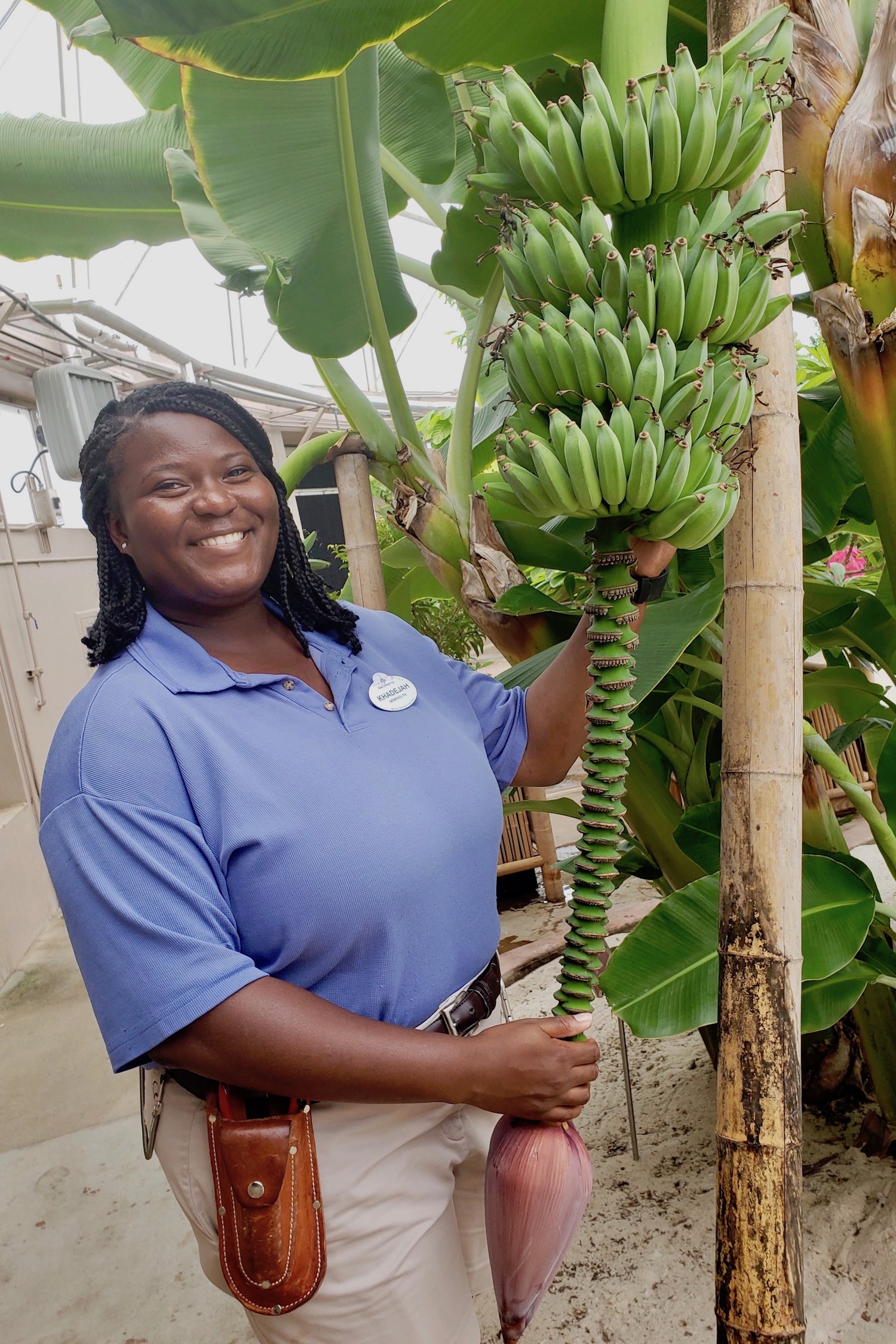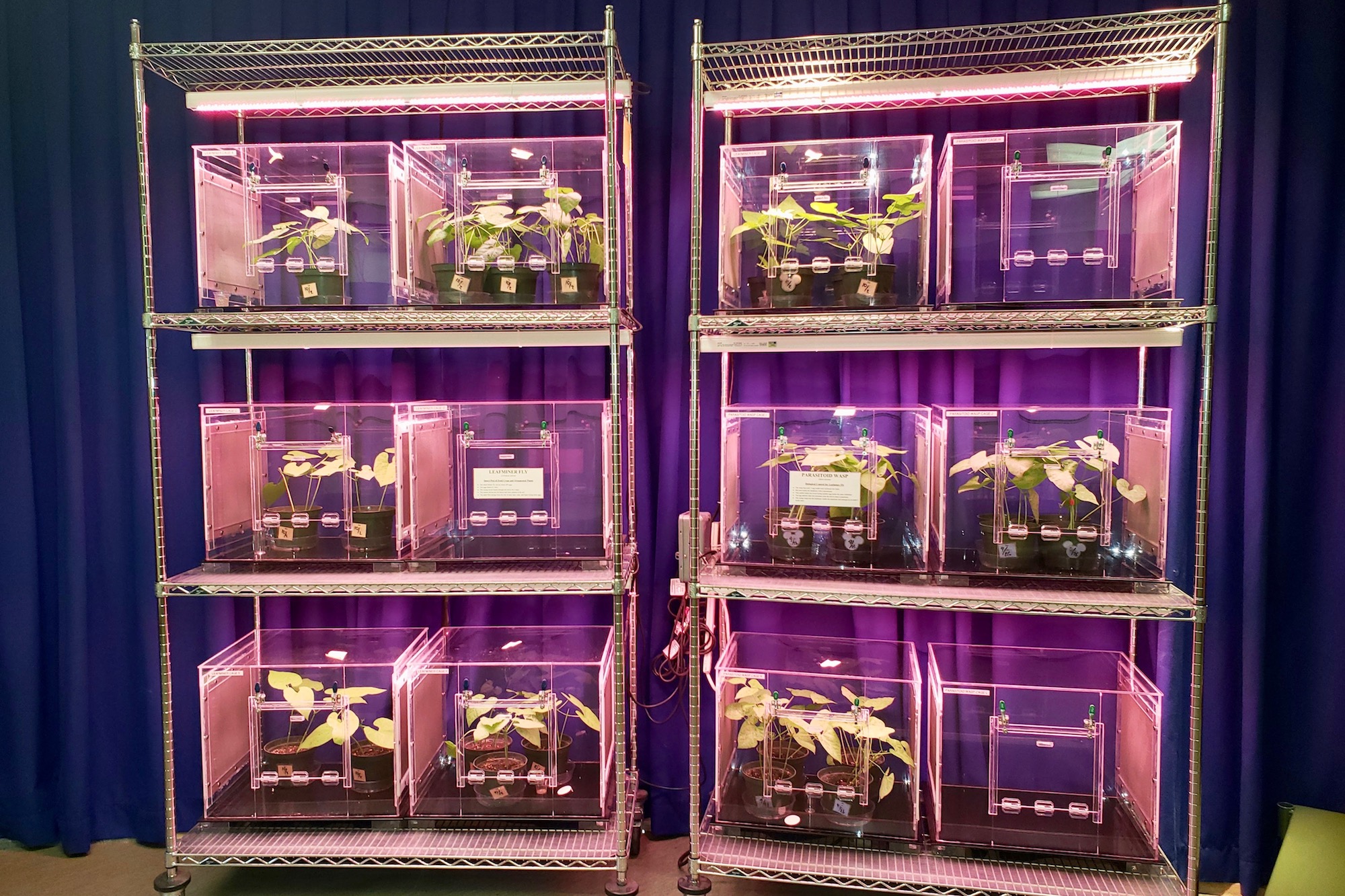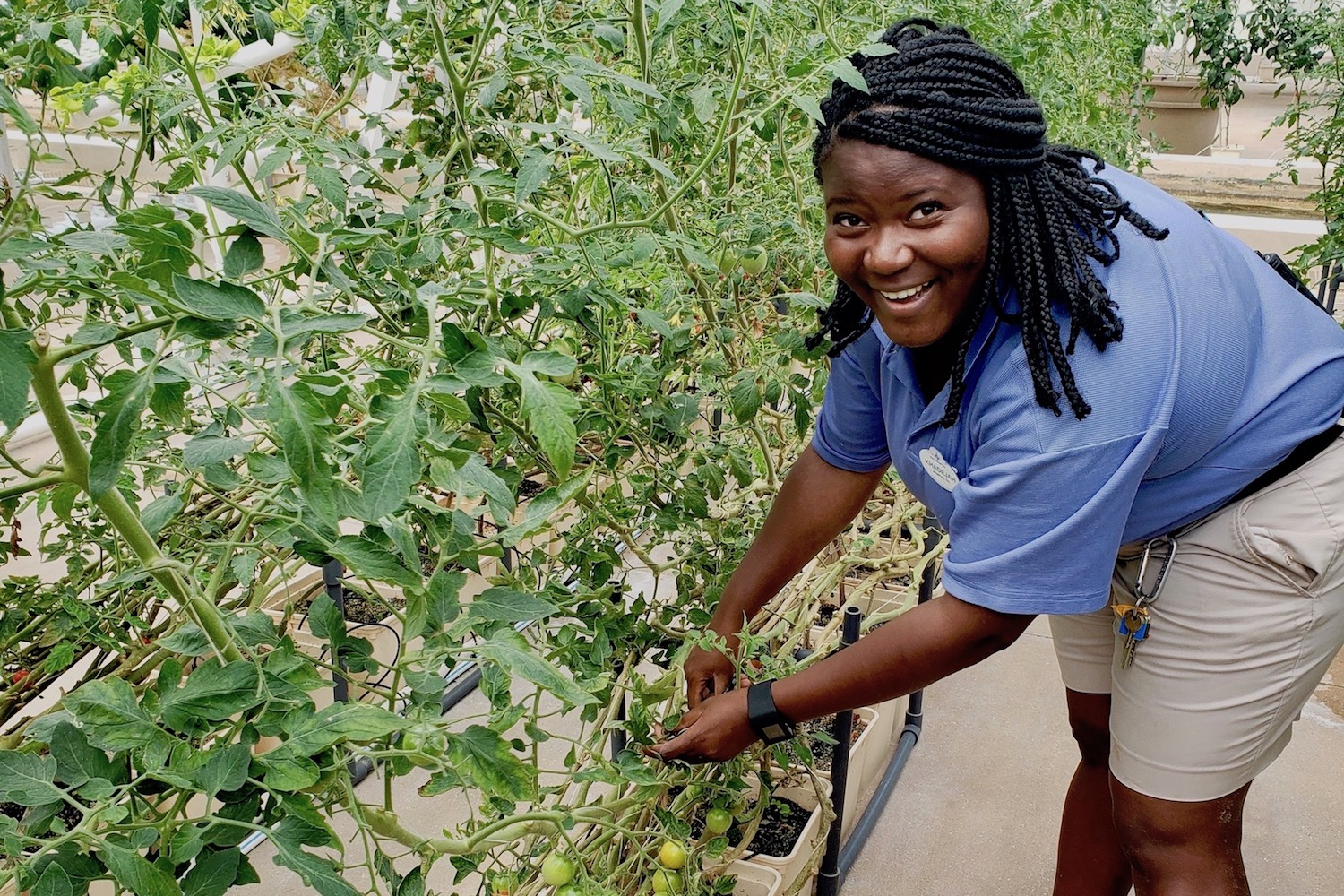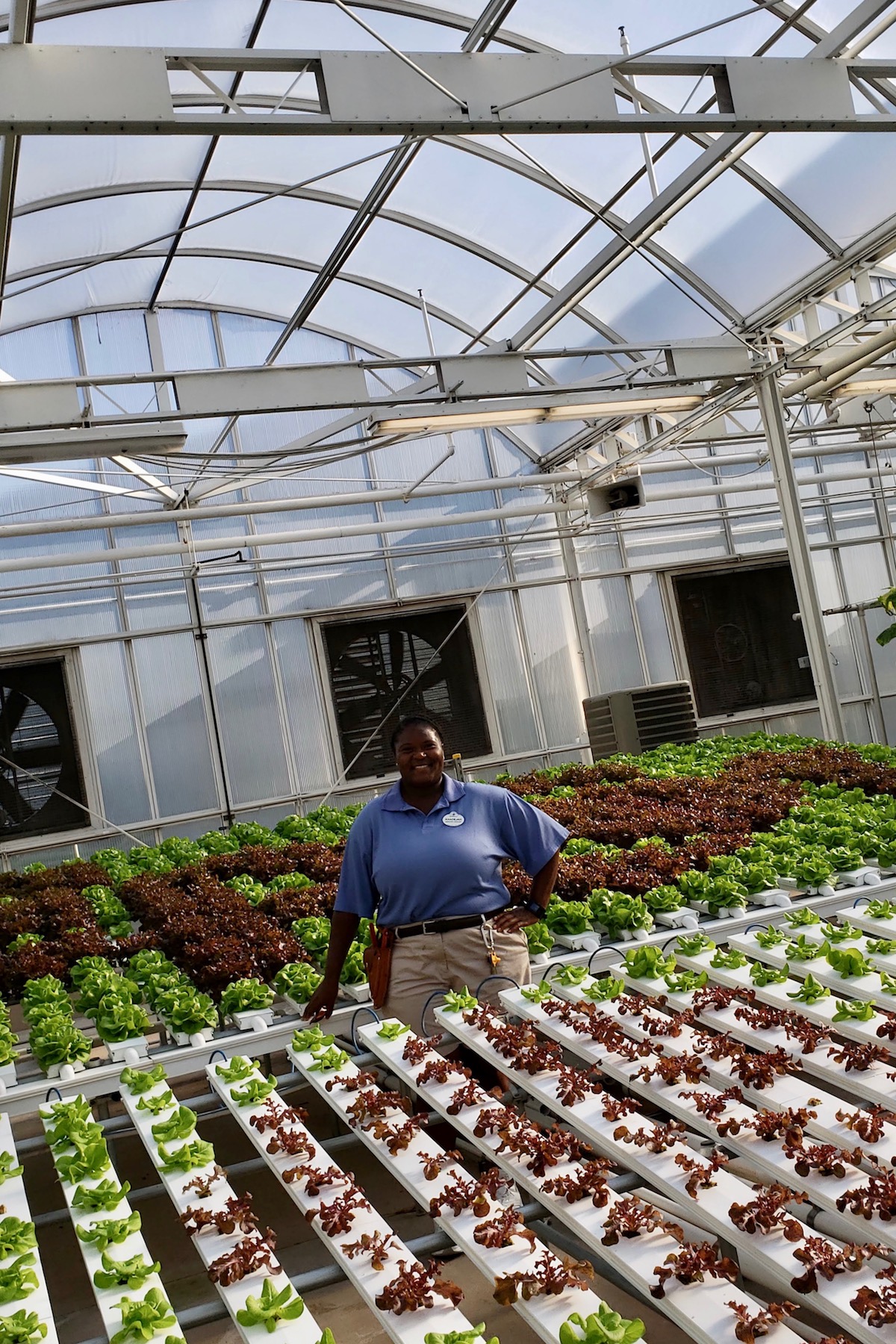Austin Peay agricultural sciences graduate realizing dream at Epcot

Austin Peay graduate Khadejah Scott’s Epcot story involves wasps.
“They don’t sting, and they’re really small,” Scott said, “similar to the size of an ant when they’re at their biggest.”
But these wasps could deliver a big economic impact.
Scott is on an agricultural sciences professional internship at Disney World through the end of January, and she has many jobs rotating through Epcot’s 2.5 million square feet of greenhouses, where food is produced for much of the park’s restaurants.
If you’ve been to Epcot, you might know where Scott is working: The park has a 13-minute boat ride named “Living with the Land” that traverses the greenhouses.
The greenhouses also give scientists like Scott a place to research high-yield growing techniques, including vertical gardens, a giant trellised “tomato tree,” and hydroponic and aeroponic gardens.
But Scott said the most important job she’s had is researching those tiny wasps, which is part of Epcot’s entomology program.
MEET THE WASPS – OPIUS DISSITUS

Epcot’s research focuses on how a certain wasp – aka opius dissitus – might make crops hardier against infestation from leaf miner flies.
Leaf miners are an invasive pest that lays eggs directly inside the leaves of such plants as celery, tomatoes, potatoes and beans. The larvae damage the plants by burrowing through the leaves. Predators and pesticides have a hard time getting to the larvae because they’re inside the leaf.
Here’s the weird science part: The wasps have the ability to find leaf miner larvae and lay eggs inside them, which eventually kills the leaf miner. That disruption to the leaf miner life cycle can prevent crop infestations.
The University of Florida lists the wasps as a potential biological control of leaf miners and cites the leaf miner research at Epcot.
REALIZING A DISNEY DREAM

Scott traveled to Walt Disney World with her family during spring break in 2015.
“The trip was absolutely amazing and definitely made its way in the top 10 memories of my life,” she said. “We visited Epcot, and it changed my life. I remember being overwhelmed with happiness, so much to the point where I thought, ‘I have to work here one day.’”
Since that trip, she periodically looked for Disney World job postings. The third year was the charm, she said.
“I am so fortunate to be working here and have had an amazing time.”
PLANTING THE EPCOT CAMPUS RED

Scott, who graduated this spring from APSU with a Bachelor of Science in agriculture, went through three rounds of interviews before landing the Epcot internship.
She credits APSU and the mentorship of Dr. Donald Sudbrink, chair of the University’s Department of Agriculture, for her success.
“He’s been with me since I got here, mentoring me, teaching me,” Scott said.
The Memphis native discovered she wanted to attend APSU when she was in elementary school, while she was with her sister touring colleges. Although her sister picked another school, APSU stuck with Scott.
“I had really fond memories of Einstein’s (Einstein Bros. Bagels),” Scott said. “I just remember having coffee with my sister and my parents.”
She kept fond memories of APSU through college, and now she shows full Gov pride at Epcot, where her name tag even has the University’s name.
“I love rocking my Austin Peay gear, even here,” she said. “I’m always trying to get the conversation started about Austin Peay.”
VISIT THE DISNEY GREENHOUSES

Scott has a unique position at Epcot because she works in all the greenhouses. She described each this way (these are just a few of the details):
- CREATIVE: “We like to do things in a creative and fun way,” Scott said. It’s common to see plants hanging from a conveyor. An example: “Brussels sprouts travel throughout the greenhouse on a conveyor, their roots exposed, and periodically pass through a misting chamber where they are sprayed with all the water and nutrients they need.” The creative greenhouse also is home to nutrient film channels that feed into large fish tanks where the water fertilizes the plants. Plants include: herbs, edible flowers such as snapdragons and small vegetables.
- STRING: “Again we do things a bit differently in our greenhouses,” Scott said. “Imagine a tomato plant growing in a 4-foot-diameter pot, the vine climbing 7 feet in the air, and attaching to a trellis where the canopy spreads out 20 to 30 feet in each direction, producing cherry tomatoes that dangle over your head.” There’s also a nutrient film technique that uses gravity to move a film of nutrients and water from the top of the channel, watering and feeding plants along the way. The technique produces 2,000 heads of lettuce each month. Plants include: cucumbers, tomatoes, peppers and wintermelon (an Asian plant that resembles a giant watermelon and can weight up to 60 pounds).
- SUPPORT: This is where plants begin the journey, whether from seed, cuttings or commercial tissue cultures.
- RESEARCH: “Say we want to grow tomatoes,” Scott said. “We’ll bring in perhaps 30 different varieties of commercial tomatoes and plant them in the greenhouses then watch them grow. Research will document which have the fewest disease and insect problems, which have the best-looking fruit that lasts the longest, which are the easiest to work with and which tolerate the heat of growing in a Florida greenhouse in the summertime. Of those 30 varieties, we may only find one or two cultivars that meet our growing criteria, or we’ll come across a new growing system we’ve either dreamed up or seen on the market.”
- ENTOMOLOGY: These are the bugs. Scientists rear and maintain insect colonies, release beneficial insects into the greenhouse crops and maintain entomology-related shows.
TO LEARN MORE
- For more about the Living with the Land ride and the greenhouses at The Land Pavilion, visit https://disneyworld.disney.go.com/attractions/epcot/living-with-the-land/.
- For more about Austin Peay’s Department of Agriculture, go to https://www.apsu.edu/agriculture/.
- If bugs are your thing, learn more about Epcot’s wasps, opius dissitus, at http://entnemdept.ufl.edu/creatures/beneficial/wasps/opius_dissitus.htm.